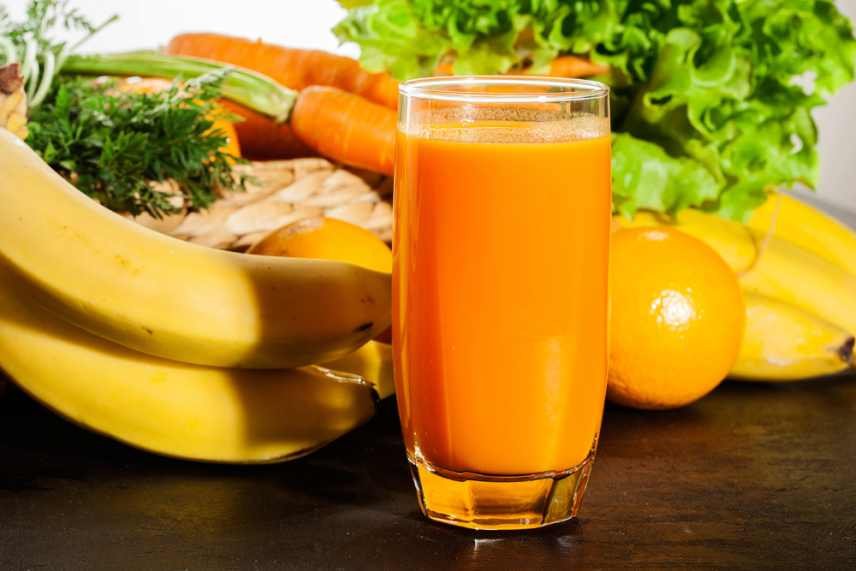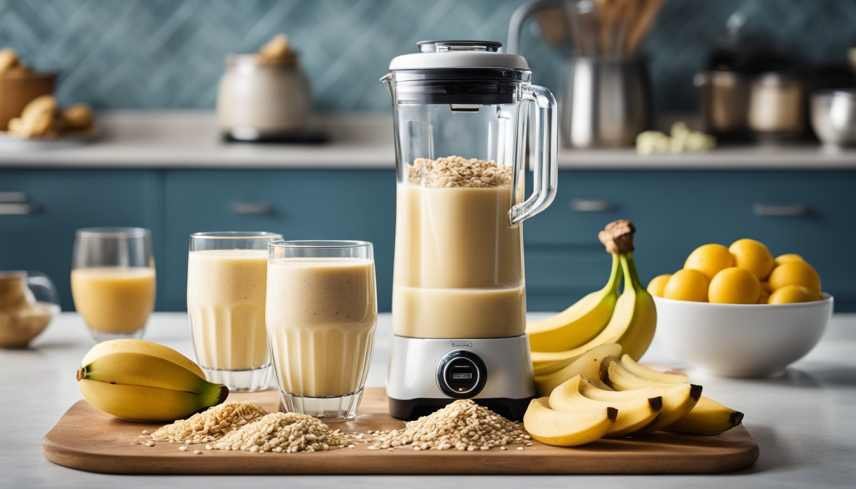Smoothies can be a popular choice for those looking to lose weight, offering a convenient way to pack in nutrients and satiety. Many people find that incorporating smoothies into their diet can provide a quick meal option that supports their weight loss goals. When prepared thoughtfully, smoothies can enhance a weight loss diet while also addressing nutritional needs.
However, not all smoothies are created equal. Some may contain excessive sugar or calorie-laden ingredients, potentially undermining weight loss efforts. It’s crucial to understand the balance of ingredients to ensure that smoothies remain a healthy addition to a diet.
Exploring the pros and cons of smoothies can help individuals make informed choices. By examining how these beverages can fit into a weight loss strategy, readers can determine whether they are a beneficial component of a balanced diet or if they might hinder progress.
Understanding Smoothies in the Context of Weight Loss
Smoothies have gained popularity as a convenient option for those aiming to lose weight. Their composition often includes a mix of fruits, vegetables, and various ingredients that can impact overall nutrition, calorie intake, and dietary effectiveness.
Defining Smoothies and Their Varieties
Smoothies are blended beverages typically made from fruits, vegetables, and liquids such as water, juice, or milk. They can vary widely in ingredients, from creamy avocado to leafy greens and protein sources like yogurt or protein powder.
Common varieties include:
- Fruit Smoothies: Primarily contain fruits, offering natural sweetness and vitamins.
- Green Smoothies: Incorporate leafy greens, yielding additional fiber and minerals.
- Protein Smoothies: Focus on protein-rich ingredients, often helpful for muscle recovery.
These combinations can affect the calorie count and nutrient density significantly.
The Role of Smoothies in Dieting and Nutrition
In the context of dieting, smoothies can serve multiple purposes. They can replace meals or be used as snacks, aiding in calorie control. For those looking to increase their intake of fruits and vegetables, smoothies offer an efficient means to blend and consume more servings.
Many nutritionists recommend including sources of fiber to improve satiety. High-fiber ingredients, such as spinach or chia seeds, can help keep hunger at bay while providing essential nutrients. The balance of ingredients affects not only calorie content but also the availability of vitamins, minerals, and antioxidants.
Comparing Smoothies with Whole Fruits and Vegetables
When evaluating smoothies against whole fruits and vegetables, important distinctions exist. Whole produce provides intact fiber, which can slow digestion and enhance feelings of fullness. In contrast, smoothies may lead to quicker consumption and less satiety due to the blending process.
Another factor is nutrient absorption. Incorporating healthy fats, such as avocado or nuts, in smoothies can promote better absorption of fat-soluble vitamins. However, excessive calorie content from added sugars or fats can counter intended weight loss benefits.
It’s crucial for individuals to consider their dietary goals and assess whether smoothies serve as a beneficial addition or replacement to whole foods.
Advantages of Incorporating Smoothies for Weight Loss
Including smoothies in a weight loss strategy offers several benefits that can align with nutritional goals. These beverages can be an effective way to manage hunger, increase nutrient intake, and provide convenience.
Nutrient Density and Satiety
Smoothies can be formulated to be nutrient-dense, incorporating a variety of fruits, vegetables, and healthy fats. For example, adding spinach, kale, or berries boosts vitamins, minerals, and antioxidants.
Including protein sources like Greek yogurt or protein powder enhances satiety, making it less likely for individuals to experience hunger soon after consumption. This increased feeling of fullness can help prevent __________, which is crucial for maintaining a calorie deficit.
Adding ingredients rich in fiber, such as oats or chia seeds, further contributes to satiety. Fiber helps in sustaining energy levels and aids digestion, making smoothies an excellent option for meal replacement.
Convenience and Versatility
Smoothies are incredibly convenient for busy lifestyles. They can be prepared quickly using a blender, allowing individuals to fit nutrition into their day without extensive meal prep.
The versatility of smoothies is another advantage. They can accommodate various dietary preferences and needs, from vegan to high-protein options. Ingredients can be mixed and matched based on personal taste or nutrition goals, ensuring that individuals receive their desired servings of fruits, vegetables, and protein.
This flexibility helps prevent boredom with meals, encouraging consistent healthy eating habits vital for weight loss.
Potential for Calorie Control
Smoothies can be an effective tool for portion control. By measuring ingredients, individuals can create balanced, lower-calorie meals that fit within their dietary plans. This method removes the guesswork often associated with traditional meal preparation.
Making smoothies at home allows for better tracking of calories, fostering a clearer understanding of daily intake. When individuals opt for whole ingredients rather than pre-packaged smoothies, they can further reduce added sugars and unwanted calories.
Additionally, by smartly selecting ingredients, one can craft a smoothie that satisfies cravings without excess calories, contributing to an effective weight management strategy.
Possible Risks and Downsides of Smoothies for Weight Loss
Smoothies can serve as a convenient option for those pursuing weight loss; however, they come with potential risks and downsides. Key considerations include hidden sugars, effects on blood sugar and digestion, and the risk of overconsumption.
Hidden Sugars and Calorie Pitfalls
Many store-bought smoothies contain added sugars or sweeteners that significantly increase calorie counts. For instance, a seemingly healthy fruit smoothie may contain fruit juice, which often has a high sugar content, surpassing that of whole fruits.
It’s essential to scrutinize labels for hidden sugars. A smoothie might contain several servings of fruit and other ingredients, leading to a total calorie intake that could hinder weight loss efforts. Consuming excess calories in liquid form may not provide the same satisfaction as solid food, contributing to unintentional overeating.
Impact on Blood Sugar and Digestion
Smoothies with a high sugar content can lead to rapid spikes in blood sugar levels. This fluctuation can cause a quick rush of energy followed by a crash, resulting in increased hunger soon after consumption. Fiber plays a crucial role in regulating blood sugar levels, but many smoothies lack sufficient fiber, especially if they rely heavily on juice.
Furthermore, smoothies may sometimes be hard to digest depending on their ingredients. Certain combinations may cause gas or bloating, particularly when various fruits and vegetables are mixed together. Consequently, this can detract from the weight loss goals of those who experience discomfort after drinking these blends.
Overconsumption and Lack of Satiety
Smoothies might not provide the same level of satiety as whole foods. Because they are liquids, they may not trigger the same fullness signals in the body. This can lead to consuming additional snacks or meals shortly thereafter, ultimately contributing to weight gain instead of loss.
To maintain weight loss objectives, individuals should be mindful of portion sizes. A large smoothie can easily have upwards of 400 calories or more, which may equate to a substantial meal. Balancing ingredients and ensuring that smoothies contain protein and fiber can help enhance feelings of fullness and prevent overeating.
Selecting Ingredients for Optimal Benefits
Selecting the right ingredients for smoothies can significantly impact their effectiveness for weight loss. The focus should be on fruits, vegetables, proteins, and healthy fats while avoiding unwanted additives.
Choosing the Right Fruits and Vegetables
Fruits and vegetables are crucial for providing essential nutrients and fiber. Leafy greens like kale and spinach are excellent choices, offering vitamins without many calories. Berries such as strawberries and blueberries are nutrient-dense and lower in sugar compared to other fruits.
Incorporating a variety of colors ensures a broad spectrum of nutrients. Aim for a mix of high-water content produce, like cucumbers and celery, to enhance hydration. Using frozen fruits can also make the smoothie colder and thicker, which many find more enjoyable.
Incorporating Proteins and Healthy Fats
Adding proteins and healthy fats can improve satiety and help control hunger. Greek yogurt is a great source of protein, offering creaminess without adding excessive calories. Alternatively, nut butters, like almond or peanut butter, provide healthy fats and additional protein.
Nuts and seeds such as chia seeds or flaxseeds provide omega-3 fatty acids, which support heart health. It’s essential to measure these ingredients; a tablespoon can be sufficient, as they are calorie-dense. Combining these elements creates a smoothie that is not only nutritious but filling.
Avoiding Added Sugars and Unhealthy Fats
Minimizing added sugars is vital for maintaining a healthy weight. Ingredients like honey or juices can quickly elevate calorie content without significant nutritional benefits. Instead, the natural sweetness of fruits should serve as the primary source of flavor.
Avoid unhealthy fats found in certain store-bought smoothies. These may contain high-fructose corn syrup or artificial additives. Stick to whole, natural ingredients to ensure the smoothie supports weight loss and overall health effectively.
Crafting the Ultimate Weight Loss Smoothie
Creating an effective weight loss smoothie requires careful attention to macronutrients, flavors, and preparation techniques. These factors influence both the nutritional value and enjoyment of the smoothie, making it easier to incorporate into a healthy eating routine.
Perfecting the Balance of Macronutrients
A well-crafted weight loss smoothie should balance protein, healthy fats, and carbohydrates. Protein is crucial for muscle maintenance and satiety. Ingredients like Greek yogurt, protein powder, or silken tofu can boost protein content.
Including healthy fats such as avocado, nut butter, or chia seeds helps with nutrient absorption and provides sustained energy.
The carbohydrate source can be fresh or frozen fruit, which offers natural sweetness and essential vitamins. Fiber-rich fruits like berries or bananas also contribute to fullness and digestive health.
By combining these components, individuals can create a satisfying and nutrient-dense smoothie that supports weight loss goals.
Enhancing Flavors Naturally
Flavor is vital for making healthy choices enjoyable. Instead of relying on sugary additives, natural ingredients can enhance the taste.
Spices and herbs like cinnamon, vanilla extract, or mint add complexity without extra calories. Cocoa powder introduces a rich flavor while providing antioxidants.
Frozen fruits heighten sweetness and chill the smoothie, offering a refreshing texture.
Experimenting with different fruit combinations, such as mango and spinach or pineapple and kale, can yield delicious results. Using simple ingredients ensures that flavors remain vibrant and appealing.
Tips for Preparation and Consistency
Smoothie preparation is straightforward but can influence the final result. Using a high-quality blender is essential for achieving the desired consistency.
For a thicker texture, incorporate frozen fruits or vegetables. If a thinner consistency is preferred, adding liquids like coconut water or almond milk can help.
Measuring ingredients can assist in maintaining the correct ratios of macronutrients. Making smoothies in advance and storing them in sealed containers can save time without sacrificing nutritional content.
Blending techniques, like starting with liquids followed by solids, ensure an even blend. Following these tips helps create a satisfying smoothie that aligns with weight loss efforts.
Lifestyle Considerations and Long-Term Success
Adopting smoothies for weight loss involves understanding how they fit within an individual’s lifestyle. Key considerations include how to integrate them into a balanced diet, tailor them to specific nutritional needs, and track progress effectively.
Incorporating Smoothies into a Balanced Diet
Smoothies can serve as a meal replacement or a supplement to meals, depending on an individual’s caloric needs. It is critical to balance smoothies with other food groups to ensure proper nutrient intake. A smoothie should contain a blend of fruits, vegetables, and proteins while avoiding excessive sugars or calories.
For a balanced smoothie, consider the following ingredients:
- Fruits: Berries, bananas, and apples add flavor and antioxidants.
- Vegetables: Spinach, kale, or beet greens increase fiber and nutrients.
- Proteins: Greek yogurt, protein powder, or nut butters support muscle maintenance and satiety.
Ensuring variety helps maintain interest and prevent nutritional deficiencies.
Adjusting Smoothies to Individual Needs
Tailoring smoothies to meet individual needs is essential for sustainable weight loss. Factors such as age, weight, and activity level influence caloric and nutritional requirements. A nutritionist or dietitian can provide personalized recommendations for macro and micronutrient ratios.
For instance, an active individual may require higher protein and carbohydrate levels, while someone with a sedentary lifestyle may focus on lower calories. Incorporating specific ingredients can also address dietary restrictions, such as lactose-free options or low-sugar alternatives.
Adjusting recipes based on personal preferences ensures that smoothies fit seamlessly into daily routines.
Monitoring Progress and Making Adjustments
Tracking smoothie intake and changes in weight can help assess effectiveness. Keeping a food diary or using apps to log food can provide insights into dietary patterns. Regularly evaluating energy levels, appetite, and weight is key to determining if smoothies are working towards weight loss goals.
If progress stalls, it may be necessary to adjust ingredients or portions. Incorporating feedback from a healthcare professional can offer valuable insight. Potential modifications might include increasing fiber for better satiety or reducing added sugars to enhance nutrient density.
Staying adaptable and open to changes can promote long-term dietary success.
FAQs: The pros and cons of smoothies
Smoothies can play a role in weight loss, but understanding their effectiveness, potential downsides, and how to integrate them into a diet is important. The following questions address key considerations regarding smoothies for weight loss.
How effective are smoothies for breakfast in a weight loss regimen?
Smoothies can be an effective breakfast option when they include balanced nutrients. They can help control hunger and provide essential vitamins. However, portion size and ingredient quality are crucial for achieving desired weight loss results.
What are some potential downsides to a diet primarily consisting of smoothies?
A diet high in smoothies may lead to nutrient deficiencies if it lacks variety. Relying solely on smoothies can also result in excess calorie intake if they are too high in sugar or fats. This approach may hinder long-term sustainable eating habits.
Which ingredients should be avoided in weight loss smoothies to maximize benefits?
To maximize benefits, avoid high-sugar fruits like bananas and mangoes. Also, stay away from sweetened yogurts and syrups. Excessive use of high-calorie add-ins like nut butters can sabotage weight loss goals.
What are the realistic weight loss expectations from a short-term smoothie diet?
Realistic expectations from a short-term smoothie diet include a modest weight loss of 1-2 pounds per week. Individuals may initially lose water weight, but sustainable fat loss takes longer. Setting gradual goals helps maintain motivation.
How can smoothies be incorporated into a long-term weight management plan?
Incorporating smoothies into a long-term plan involves using them as meal replacements or snacks. They can complement solid meals to increase fruit and vegetable intake. Balancing smoothies with whole foods enhances nutritional variety.
Are there any health risks associated with following a smoothie-only diet for an extended period?
Yes, there are health risks with a smoothie-only diet over long periods. Such diets can lead to muscle loss, anemia, and vitamin deficiencies. Consulting a healthcare provider before starting any restrictive diet is advisable.
The Science Behind Carrot and Banana Smoothies for Weight Loss

In this article, we explore the science behind incorporating carrot and banana smoothies into your weight loss strategy. So, grab your blender and let’s get ready to mix up some knowledge with flavor!
Continue reading: Carrot and Banana Smoothies for Weight Loss
What Fruits Not to Mix in a Smoothie: A Guide for Optimal Blends

Knowing what fruits not to mix in a smoothie can enhance its taste and nutritional value, because not all combinations are beneficial. Certain fruits can clash in flavor or texture, leading to an unappetizing drink and potential digestive discomfort. Understanding which fruits to avoid can elevate the smoothie experience and ensure it remains healthy and enjoyable.
Certain fruit combinations can lead to digestive issues or undesirable flavors. Awareness of which fruits to mix or avoid can enhance both the taste and health benefits of a smoothie.
Continue reading: What Fruits Not to Mix in a Smoothie
Recent Posts
Vegan Meal Replacement Smoothie Recipes for Quick and Nutritious Fuel
Vegan meal replacement smoothies offer a convenient way to pack essential nutrients into a quick and delicious beverage. These recipes allow individuals to enjoy a balanced, healthy meal while...
Carrot Smoothies for Weight Loss: A Delicious Way to Shed Pounds
Carrot smoothies for weight loss have gained popularity as an effective choice for busy women looking to lose weight. Packed with vitamins, minerals, and fiber, carrots provide essential nutrients...


